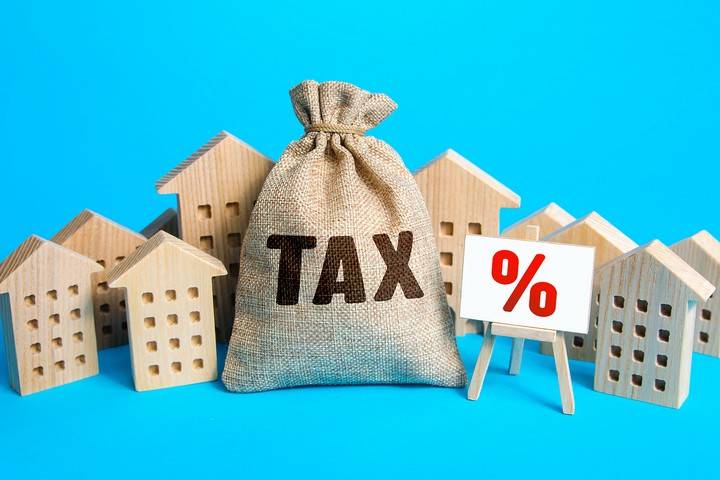Buying property through a tax sale can be an excellent income opportunity for a real estate investor. A savvy tax sale property buyer can pay almost nothing and derive hundreds of thousands of dollars of profit from a future sale of a property they’ve picked up. It starts with knowing how to bid on tax-sale properties and where to buy them.
As real estate costs have increased exponentially, tax sales continue to grow in interest and attention. Here is how to start your journey bidding on tax sale properties.
How to bid on a tax sale
 Almost all tax sales Ontario and Canada are made through public tender. This is when a listing is created and posted somewhere. Bidders then submit tenders. A ‘tender’ is a written offer with an amount to purchase a property. The highest bid typically wins out and gets the property. It’s commonly done through websites and allows one to bid on their own time.
Almost all tax sales Ontario and Canada are made through public tender. This is when a listing is created and posted somewhere. Bidders then submit tenders. A ‘tender’ is a written offer with an amount to purchase a property. The highest bid typically wins out and gets the property. It’s commonly done through websites and allows one to bid on their own time.
Some tax sales occur through a public auction. These usually have to be attended to in person. As one bid on a tax sale at a public auction, they need to have money in hand, either through cash, money order, bank draft, or cheque issued by a bank or trust corporation. They offer a quick way to pick up a property on tax sale and is the more traditional way to purchase a tax sale home.
How to submit a tax sale bid
 The bid is made privately when you submit a tax sale bid by public tender. What you’re offering does not go public. The tender must be sealed and delivered either in person by mail or by courier. A tender must be delivered by the deadline stipulated, and if it is not received by said deadline, it will not be accepted by a bid.
The bid is made privately when you submit a tax sale bid by public tender. What you’re offering does not go public. The tender must be sealed and delivered either in person by mail or by courier. A tender must be delivered by the deadline stipulated, and if it is not received by said deadline, it will not be accepted by a bid.
A tax sale bid must often be submitted alongside a minimum of 20% deposit. A lack of deposit means a tender or bid will be outright rejected. The deposit must be in either a money order, bank draft, or certified bank or trust corporation cheque. This is to demonstrate that a purchaser has the funds to be able to acquire the property in question.
How to fill out Form 7 Tender to Purchase
 Form 7 Tender To Purchase is a document to be filled out for a tax sale bid on public tender. Form 7 will include your name, address, and other details. This form must be submitted in a sealed envelope that indicates it is for a tax sale and with a description of the address sufficient to permit the treasurer to identify the correct parcel of land to which the tender relates.
Form 7 Tender To Purchase is a document to be filled out for a tax sale bid on public tender. Form 7 will include your name, address, and other details. This form must be submitted in a sealed envelope that indicates it is for a tax sale and with a description of the address sufficient to permit the treasurer to identify the correct parcel of land to which the tender relates.
Property Worth
 So long as you meet the minimum mentioned for how much a property is worth, you decide what a property is worth on a tax sale. For example, the property’s assessed value is $800,000. The minimum tender amount mentioned in the listing is $250,000. Submit any tender above that minimum amount, realizing that you are competing with others making similar bids.
So long as you meet the minimum mentioned for how much a property is worth, you decide what a property is worth on a tax sale. For example, the property’s assessed value is $800,000. The minimum tender amount mentioned in the listing is $250,000. Submit any tender above that minimum amount, realizing that you are competing with others making similar bids.
Tender
 Just because someone has submitted a tender does not mean they have committed to buying a tax-sale property. If you are selected, you can opt not to purchase the property. The tax sale property would then go to the next highest bidder. This advantage allows a purchaser to bid on multiple properties with no firm commitment to buy.
Just because someone has submitted a tender does not mean they have committed to buying a tax-sale property. If you are selected, you can opt not to purchase the property. The tax sale property would then go to the next highest bidder. This advantage allows a purchaser to bid on multiple properties with no firm commitment to buy.
If the treasurer rejects your tender, it will be returned to you by regular mail alongside the deposit and enclosed with a statement highlighting the reason for rejection. Typically, tenders are opened as soon as they are received. That said, you won’t know for certain if yours has been accepted or rejected until you receive communication from the treasurer.
How to find out about new tax sales
 Before going out and bidding on what looks like amazing real estate deals, take the time to do research first. Tax sale properties come as-is. You don’t have the right to enter and inspect the property beforehand. You’re going in blind, to some degree. A tax sale property may have a lien, tenants or people living in the home, and debt attached. Do a title search to investigate. Consider the risks of buying a property sight unseen and whether this is a property you want to bid on.
Before going out and bidding on what looks like amazing real estate deals, take the time to do research first. Tax sale properties come as-is. You don’t have the right to enter and inspect the property beforehand. You’re going in blind, to some degree. A tax sale property may have a lien, tenants or people living in the home, and debt attached. Do a title search to investigate. Consider the risks of buying a property sight unseen and whether this is a property you want to bid on.
Various websites share details of tax sale properties online on public tender. Included is a minimal amount of information on that property. To access these details, you may be required to sign up for an email newsletter or create an account.

